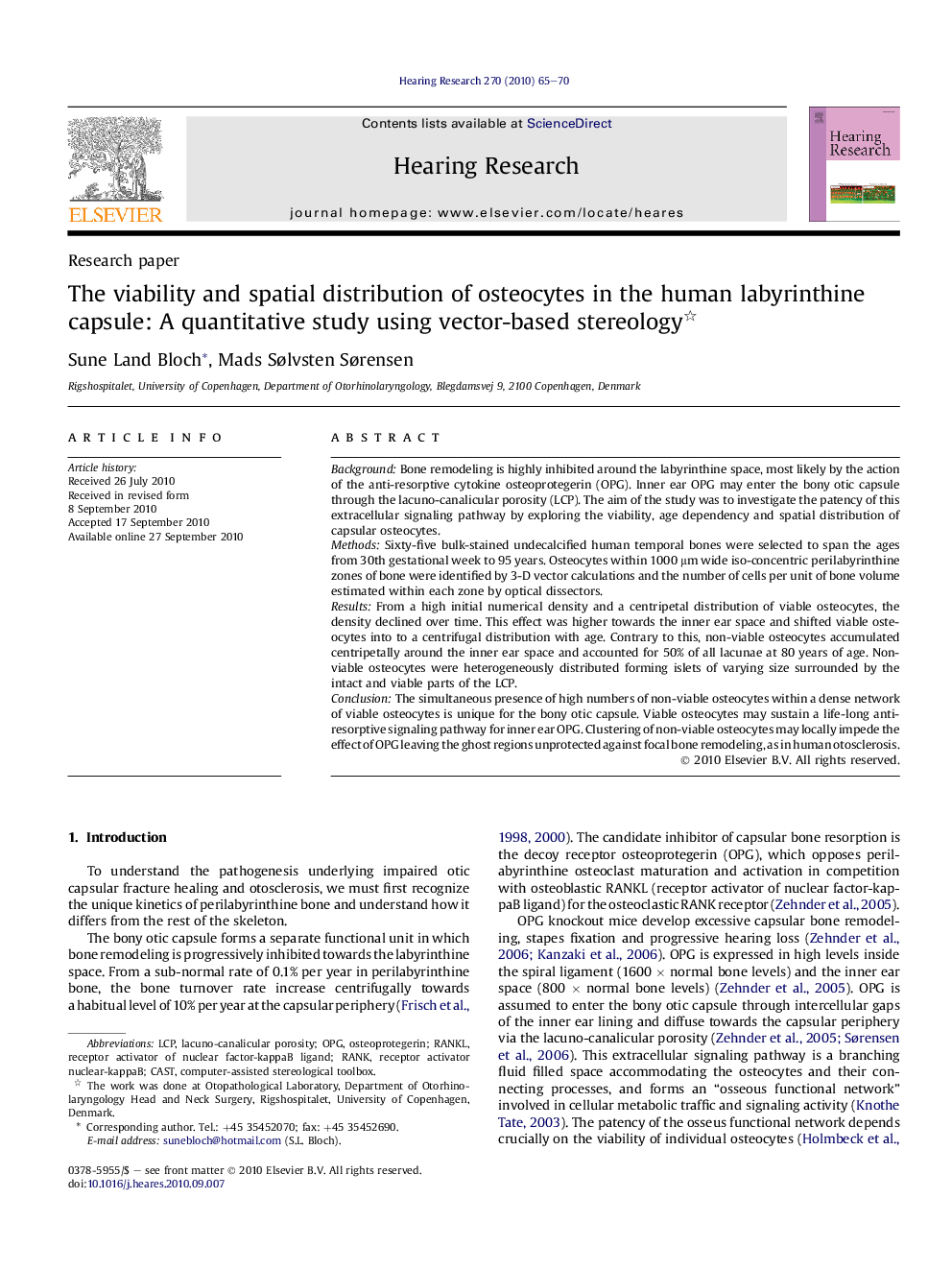| Article ID | Journal | Published Year | Pages | File Type |
|---|---|---|---|---|
| 4355531 | Hearing Research | 2010 | 6 Pages |
BackgroundBone remodeling is highly inhibited around the labyrinthine space, most likely by the action of the anti-resorptive cytokine osteoprotegerin (OPG). Inner ear OPG may enter the bony otic capsule through the lacuno-canalicular porosity (LCP). The aim of the study was to investigate the patency of this extracellular signaling pathway by exploring the viability, age dependency and spatial distribution of capsular osteocytes.MethodsSixty-five bulk-stained undecalcified human temporal bones were selected to span the ages from 30th gestational week to 95 years. Osteocytes within 1000 μm wide iso-concentric perilabyrinthine zones of bone were identified by 3-D vector calculations and the number of cells per unit of bone volume estimated within each zone by optical dissectors.ResultsFrom a high initial numerical density and a centripetal distribution of viable osteocytes, the density declined over time. This effect was higher towards the inner ear space and shifted viable osteocytes into to a centrifugal distribution with age. Contrary to this, non-viable osteocytes accumulated centripetally around the inner ear space and accounted for 50% of all lacunae at 80 years of age. Non-viable osteocytes were heterogeneously distributed forming islets of varying size surrounded by the intact and viable parts of the LCP.ConclusionThe simultaneous presence of high numbers of non-viable osteocytes within a dense network of viable osteocytes is unique for the bony otic capsule. Viable osteocytes may sustain a life-long anti-resorptive signaling pathway for inner ear OPG. Clustering of non-viable osteocytes may locally impede the effect of OPG leaving the ghost regions unprotected against focal bone remodeling, as in human otosclerosis.
Research highlights►A high viability of osteocytes was detected in the human labyrinthine capsule. ► Non-viable osteocytes accumulate towards the labyrinthine space with age. ► The combined presence of high numbers of viable and non-viable osteocytes within the same bone is unique for the bony otic capsule.
